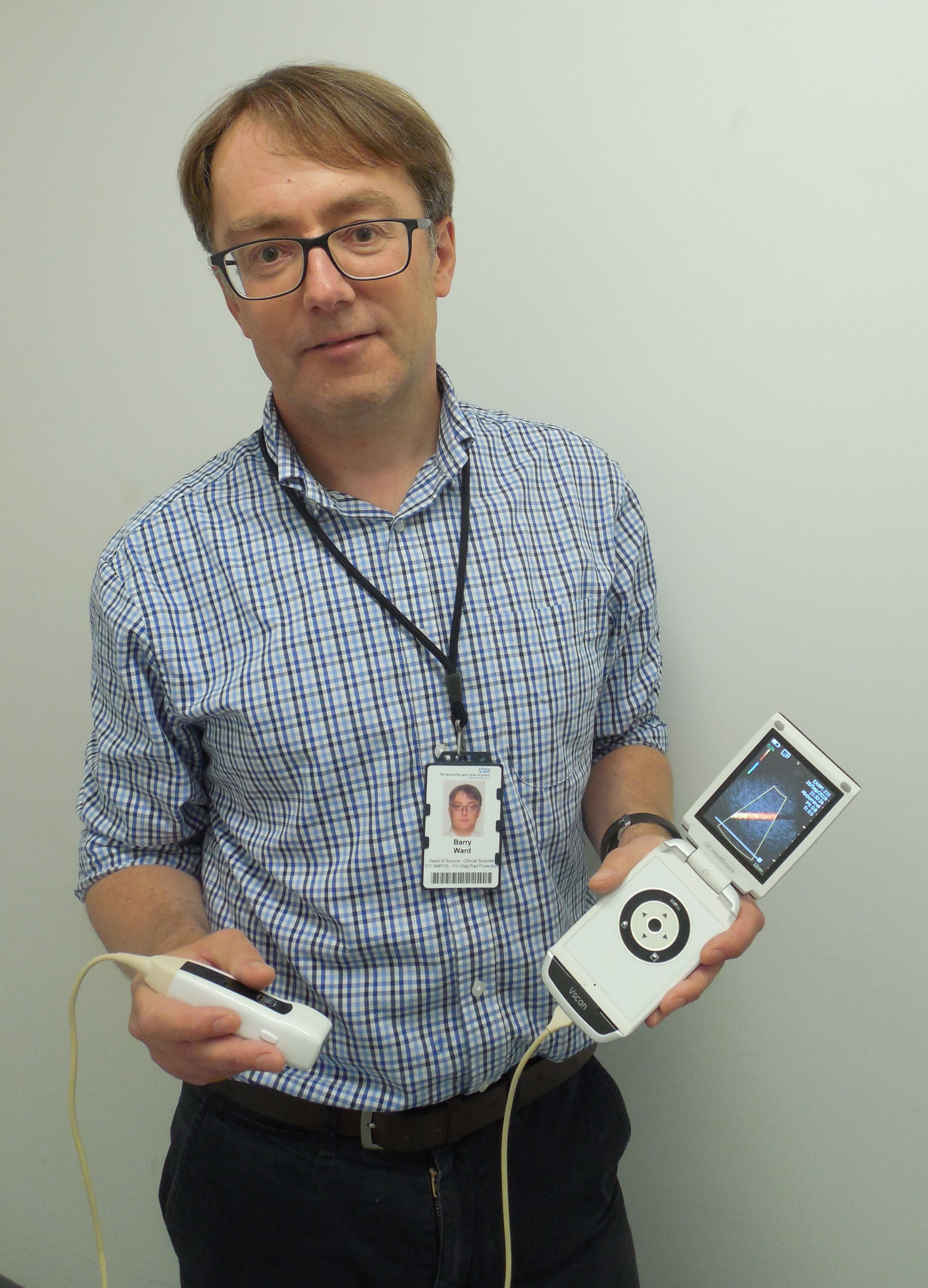Barry Ward
 The advent of the ultrasound stethoscope?
The advent of the ultrasound stethoscope?
My name's Barry Ward and I'm a clinical scientist, working at the Freeman Hospital in Newcastle upon Tyne. As part of my job, I lead a small team of scientists and technologists, looking after a wide range of ultrasound equipment in hospitals across the North East of England and Cumbria.
To my mind, one of the most exciting developments in the world of medical imaging at the moment is the gradual appearance in UK hospitals of an amazing new technology – the handheld ultrasound device. This technology allows reasonable quality moving images to be obtained from within the body using a compact, miniaturised device, small enough to be carried around by a doctor in a pocket or a small case, and superseding the traditional stethoscope in the way that it's used.
Over the last few years, the device has been taken up enthusiastically by doctors working in cardiology departments, intensive care units and accident and emergency departments for the quick initial assessment of seriously ill patients, often at the bedside. In these situations, it's particularly good at answering simple but important yes/no questions, such as "does this newly admitted patient have internal bleeding?" The moving images obtained by the clinicians allow them to make important decisions about the treatment of their patients there and then, without having to wait for more detailed, higher quality scans to be done later on by sonographers in dedicated imaging departments. Most of the handheld devices now on the market provide two complementary types of moving ultrasound image – a black and white one, showing the structure of an organ, and a "colour Doppler" one, showing how the blood is flowing through it. That's really important in many situations, but especially if a doctor is doing an urgent examination of a patient's heart.
Looking forward, it's likely that these devices will become much more common in the UK over the next few years, both in a hospital environment and in a primary care setting, e.g. at your own doctor's surgery. In particular, within the next decade or so, your GP may well start using a handheld ultrasound device to have a quick look at your heart or lungs during your routine 10 or 15 minute appointment, rather than just examining you in the conventional way, by observation and with a stethoscope. That's likely to have a profound effect on the way we do healthcare, improving both the diagnosis and treatment of a wide range of serious medical conditions.
Exciting times!





